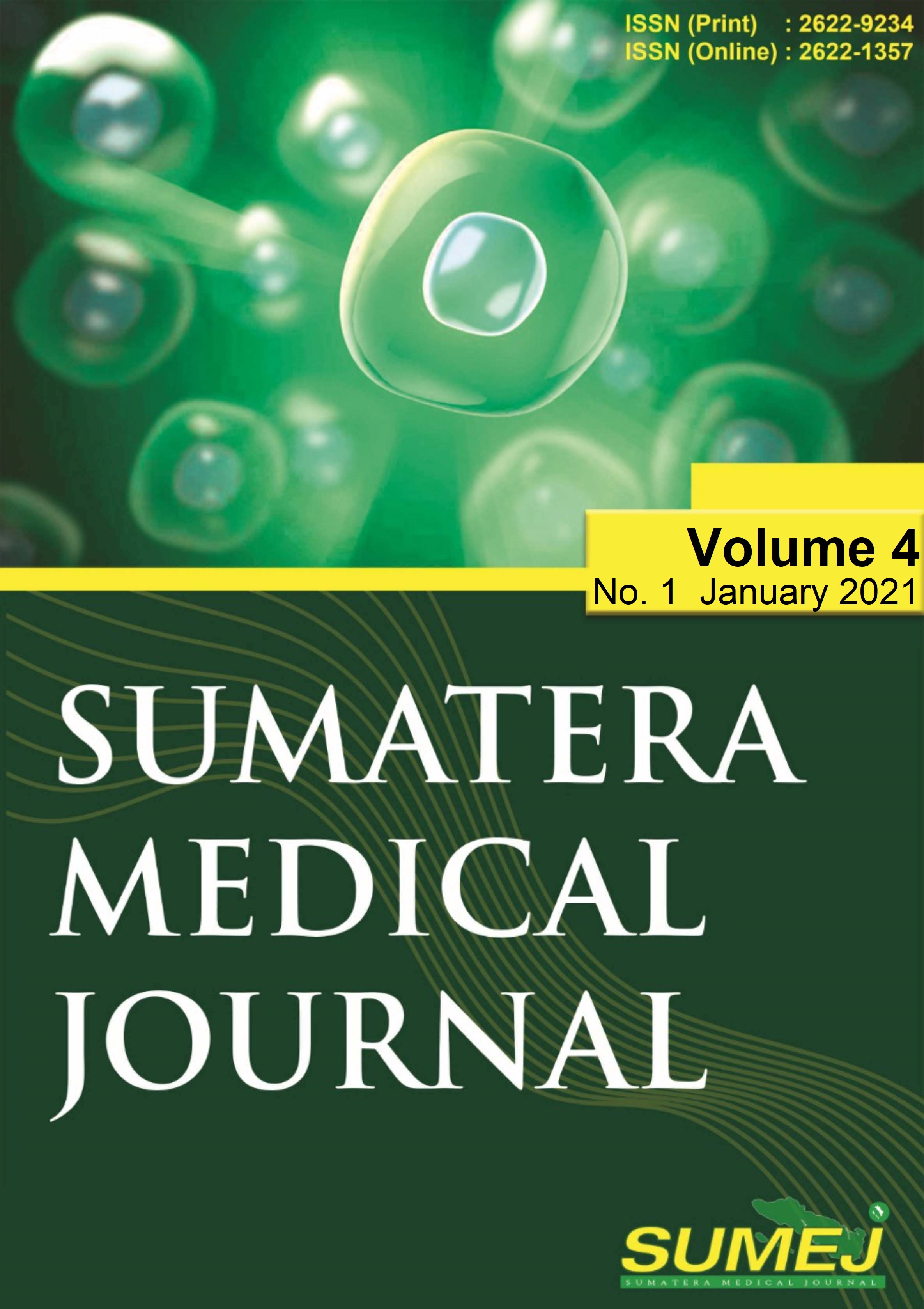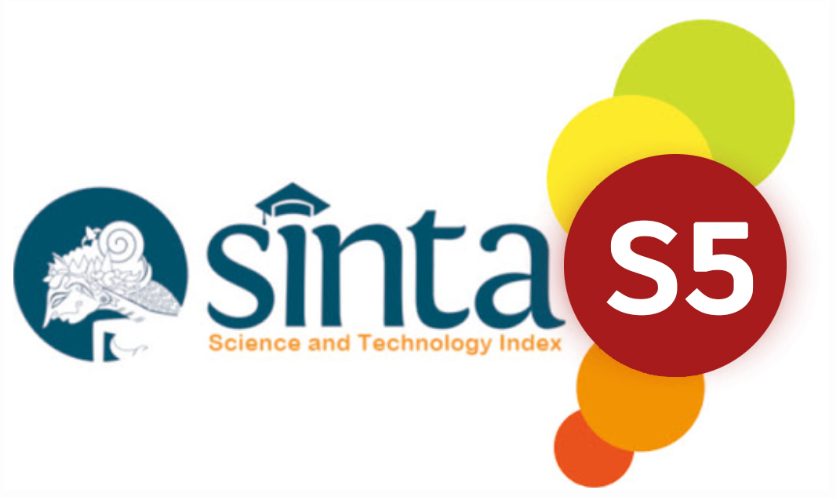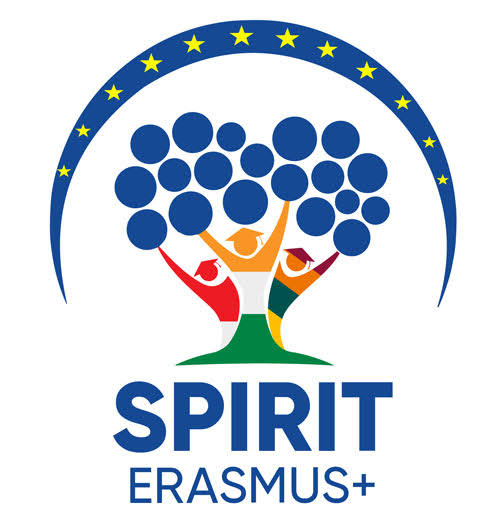Urinary Tract Infection Bacterial at RSUP H. Adam Malik Medan in 2019: an Overview Study
DOI:
https://doi.org/10.32734/sumej.v4i1.5849Keywords:
Antibiotics, Bacteria, Hospital, Sensitivity, UTIAbstract
Urinary Tract Infection (UTI) is the second-largest infection after respiratory tract infection (WHO, 2013). The prevalence of UTI in Indonesia is relatively high. UTI originated from the invasion and proliferation of microorganisms into the urinary tract in meaningful quantities. Gram-negative bacteria are mostly the cause of UTI including E. coli, Klebsiella sp, Enterobacter sp, and Proteus sp. Patients with UTI with inadequate treatment can experience complications e.g., acute renal failure and urosepsis. This study aims to find out the profile of bacteria that cause UTI at RSUP H. Adam Malik Medan in 2019. This descriptive study is using a non-analytical retrospective approach conducted to secondary data from urinary culture examination at RSUP H. Adam Malik Medan. Data were analyzed using the SPSS 24. Gram-negative bacteria results of 72.7% with E. coli postulated as the most common etiology (33,3%) and gram-positive bacteria results of 27.3%, dominated by Enterococcus faecalis (16.3%). The sensitivity study exhibited various results e.g., 100%, 98.2%, and 97.0% in E. coli for Tigecycline, Meropenem, and Amikacin respectively. Enterococcus faecalis also posed a similar results regarding its sensitivity result to different antibiotics. Gram-negative bacteria are the most common bacterial etiology of UTI, specifically E. coli with comparable sensitivity results
Downloads
References
Kumala S., Raisa N., Rahayu L., and Kiranasari A., 2009, Uji Kepekaan Bakteri yang Diisolasi dari Urin Penderita Infeksi Saluran Kemih (ISK) terhadap Beberapa Antibiotika pada Periode Maret–Juni 2008, Majalah Ilmu Kefarmasian, 6 (2), 52.
World Health Organization (WHO). 2013. Kesehatan Reproduksi Wanita Infeksi Saluran kemih (ISK). Salemba Medika. Jakarta.
Departemen Kesehatan RI 2014, Waspada Infeksi Saluran Kemih: http://www.depkes.go.id/index.php/wasada+infeksi+saluran+kemih/.
Purnomo, B. B. (2014). Dasar-dasar urologi. Edisi Ketiga. Malang: penerbit CV Sagung seto.
Callaghan. 2009. At a Glance Sistem Ginjal. Edisi 2. Jakarta: Erlangga.
Nuari, N. A., & Widayati, D. (2017). Gangguan pada Sistem Perkemihan dan Penatalaksanaan Keperawatan. Yogyakarta: Deepublisher.
Ikatan Ahli urologi Indonesia (IAUI), 2015, Guideline Penatalaksanaan Infeksi Saluran Kemih dan Genitalia Pria 2015 edisi 2, Ikatan Ahli Urologi Indonesia, Surabaya, 3.
Sukandar, E. 2014. Infeksi Saluran Kemih Pasien Dewasa, dalam :. Setiati S., Alwi I., Sudoyo AW., dkk (editors) 2014, Buku Ajar Ilmu Penyakit Dalam, Edisi VI, Pusat Penerbitan Departemen Ilmu Penyakit Dalam Fakultas Universitas Indonesia, Jakarta. Hal: 2129-35.
Brooks, G.F., Carroll, K.C., Butel, J.S., Morse S.A., Mietzner, T. 2014, Mikrobiologi Kedokteran Jawetz, Melnick, & Adelberg. Edisi 25, Penerbit buku kedokteran EGC, Jakarta.
Downloads
Published
How to Cite
Issue
Section
License
Copyright (c) 2021 Sumatera Medical Journal

This work is licensed under a Creative Commons Attribution-NonCommercial-NoDerivatives 4.0 International License.
The Authors submitting a manuscript do so on the understanding that if accepted for publication, copyright of the article shall be assigned to Sumatera Medical Journal (SUMEJ) and Faculty of Medicine as well as TALENTA Publisher Universitas Sumatera Utara as publisher of the journal.
Copyright encompasses exclusive rights to reproduce and deliver the article in all form and media. The reproduction of any part of this journal, its storage in databases and its transmission by any form or media, will be allowed only with a written permission from Sumatera Medical Journal (SUMEJ).
The Copyright Transfer Form can be downloaded here.
The copyright form should be signed originally and sent to the Editorial Office in the form of original mail or scanned document.











